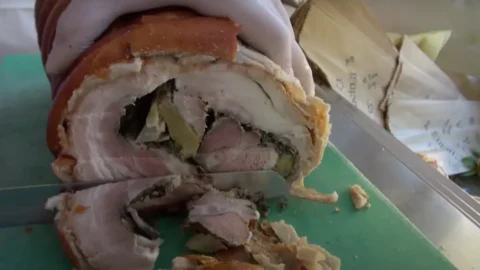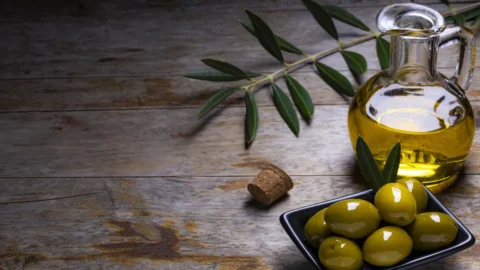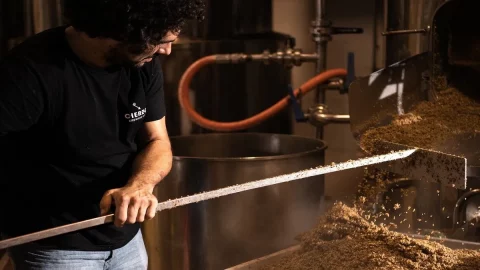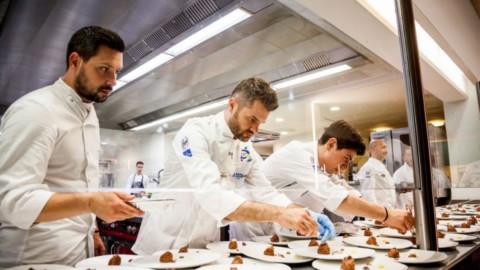The goal was ambitious, to be able to reproduce a mythical wine, which brought back the winemaking traditions of the Greeks of the island of Chios. Here "legendary" wines were produced that Marco Terenzio Varro, Roman man of letters, grammarian, soldier and agronomist, defined as “wines of the rich”. With an absolutely original procedure, the grapes were immersed for a few days in the sea, in wicker pots to eliminate the external waxy substance, called pruina, and thus obtain a faster withering managing to keep more aromas and substances in the grapes.
Giulia Arrighi, a young entrepreneur from the Island of Elba – her father Antonio is the owner of a farm located in the eastern part of the island, on the hills behind the bay of Porto Azzurro – she was passionate about the idea of reviving the oenological splendor of an island that already at the time of Pliny the Elder was defined “Island fruitful of wine” and that in the XNUMXth century it was the main producer of wine grapes in Tuscany.
And so, with the help of her father she threw herself headlong into the enterprise by resorting to the knowledge of one of the highest national authorities on the matter, the professor. Attilio Scienza, professor of viticulture at the University of Milan, author of over three hundred scientific publications in international and national journals and conference proceedings dedicated to the vine and viticulture, responsible for numerous national research projects in the field of agronomy, physiology and genetics of the vine.
Thus the project took shape Nesos, marine wine that uses salt water as an antiseptic. Professor Scienza who had carried out historical research on the secrets of the Greek wine of Chios, supported by the University of Pisa, followed the experiment in every phase, and it has been possible to reproduce the ancient wine of Chios, a real example of experimental archeology, a return to the origins that has allowed us to give answers to many unanswered questions.
And that was worth the enterprising Giulia Arrighi the Oscar Green 2020, the award promoted by Coldiretti Giovani Impresa reserved for young people who have chosen Agriculture for their future. The aim of the initiative is to promote healthy agriculture in our country, which has the many innovative ideas of young farmers as its testimonial. Giulia Arrighi won in the Creativity category "awarded for the genius of an idea, the ability to interpret the future, with the value of tradition and the ability to know how to get involved in what appear to be insurmountable challenges".
What is the great secret of the wine of the abyss? The ripening of the freshly picked grapes after being immersed in the sea for a long time it accelerates the fermentation process, restores salinity but above all avoids using sulphites and the only natural antioxidant disinfectant used in the production is sea salt. The grapes are then left to dry on racks in the sun while the subsequent maceration takes place in terracotta amphorae, as was the custom in Chios 2.500 years ago.
Arrighi father and daughter had been producing terracotta wine for some time. Their first bottle dates back to 2011. With the oenologist Laura Zuddas, they immediately believed in the potential of the terracotta used for the evolution of a wine. And they produce among other things Tresse, a "cru" composed of Sangiovese and partly of Syrah and Sagrantino, grapes that make it possible to obtain structured and long-lived wines, obtained after a long aging in large 800-litre terracotta amphorae created by the artisans of Impruneta (FI). The amphora, not yielding any aroma, enhances the varietals of the grapes used and allows, thanks to the porosity of the material (clay), a good micro-oxygenation, essential for the evolution of the wine.
Another wine produced by the Elba company is Hermia produced from Viognier grapes with the skins left in contact with the wine for months. Hermia is a character who really existed two thousand one hundred years ago: he was a cellarman slave of the rustic villa of San Giovanni on the Island of Elba. On behalf of her master, the illustrious Valerio Messalla, Hermia bought the large jars (dolia) in Minturno in southern Lazio with which she furnished the cellar and stamped her name next to the figure of a dolphin which refers to an ancient and fascinating legend of Asia Minor. The wine is therefore dedicated to the cellarman Hermia, "a tribute to the centuries-old winemaking history of our island - says Giulia Arrighi - in which the tradition of fermentation and refinement of wine in terracotta is rediscovered".
And it was right the long experience of father Antonio and of his daughter Giulia in the use of terracotta which has meant that the prof. Science agreed to start the Chio wine experiment on the island of Elba.
The young entrepreneur explains how the bunches are immersed to speed up the fragmentation process and restore salinity to the palate, a taste that drove the ancient Romans crazy during their banquets. More specifically, the grape used to recreate this method of winemaking is Ansonica: a typical white grape of Elba, probable crossing of two ancient Aegean grapes characterized by a very resistant skin and a crunchy pulp which allowed its long permanence in the sea.
After harvesting, the grapes are immersed in pots positioned at a depth of seven meters in the open sea. The divers arranged the pots and every morning for the entire period of the dive the changes and developments were checked: thus it was possible to detect the effects of sea water on the grapes: the salt attacks the grape which defends itself by producing a patina then destined to disappear in the withering phase in the sun. The grapes remained in the pots for five days, in order to store a sufficient quantity of salt to avoid the use of sulphites in production.
At the moment the wine produced it is only an experimental project. It is hoped that sooner or later it will be consumed to satisfy the curiosity of many enthusiasts.




